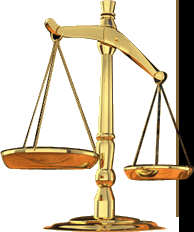Organized Crime
Because of an alert trooper, in November 1957, New York authorities discovered several notorious mobsters had convened at the rural estate of Joseph Barbara, in Apalachin, New York, including Mafiosi figures Joseph Bonanno, Carlo Gambino, Vito Genovese, Joseph Proface, and Santos Traficante. When Barbara’s guests realized police were writing down license plate numbers, some mobsters tried to flee, but most were stopped because authorities had set-up a road block checking for identification.
Exchanging intelligence, police later determined of the 60 or more gangsters identified at the estate, 53 had FBI files with 40 having known criminal records. Because of the Apalachin meeting, the FBI decided to re-examine efforts to prosecute gangsters noting, in August 1953, the New York Office had initiated a program to collect intelligence using the FBI’s “Top Hoodlum Program.”
While the mobsters meeting at Barbara’s estate proved to be a Mafiosi’s Who’s Who, until Congress passed some new laws, however, the FBI lacked the jurisdiction to effectively investigate Organized Crime. But that changed in 1961, when Robert Kennedy became Attorney General and Congress passed the Federal Wire Wager Act, the Travel Act, and the Interstate Transportation of Wagering Paraphernalia Act giving the FBI the ability to target “illegal” bookmaking operations and conduct investigations concerning individuals who traveled or used facilities in interstate or foreign commerce for the purposes of conducting racketeering activity.
 In 1963, the nation was stunned to learn about Organized Crime when the FBI convinced a former mob “button” man named Valachi to testify before a Senate subcommittee. Providing inside information, Valachi rocked the nation when he testified about mob crime families, hits, and extortion rackets. Because he believed Organized Crime posed a serious threat to the nation, Kennedy created the Justice Department’s Organized Crime and Racketeering Section to better coordinate the activities of the FBI and other law enforcement agencies charged with investigating the threat.
In 1963, the nation was stunned to learn about Organized Crime when the FBI convinced a former mob “button” man named Valachi to testify before a Senate subcommittee. Providing inside information, Valachi rocked the nation when he testified about mob crime families, hits, and extortion rackets. Because he believed Organized Crime posed a serious threat to the nation, Kennedy created the Justice Department’s Organized Crime and Racketeering Section to better coordinate the activities of the FBI and other law enforcement agencies charged with investigating the threat.
But some argued the Bureau still lacked the necessary tools to adequately investigate Organized Crime until Congress passed the Omnibus Crime Control and Safe Streets Act, in1968, giving the FBI the authority to seek court authorized wiretaps and install bugs to record personal conversations. And as part of the Organized Crime Control Act of 1970 passed the Illegal Gambling Business Act aimed at syndicated gambling and enacted the Racketeer Influenced and Corrupt Organizations [RICO] Act. With RICO, the FBI was given the authority to attack criminal organizations and seize assets—permitting authorities to recover both criminal and civil penalties for violations, including treble damages, costs, and attorney fees.
[NOTE: Information contained herein was obtained from the FBI’s official website www.FBI.gov].

